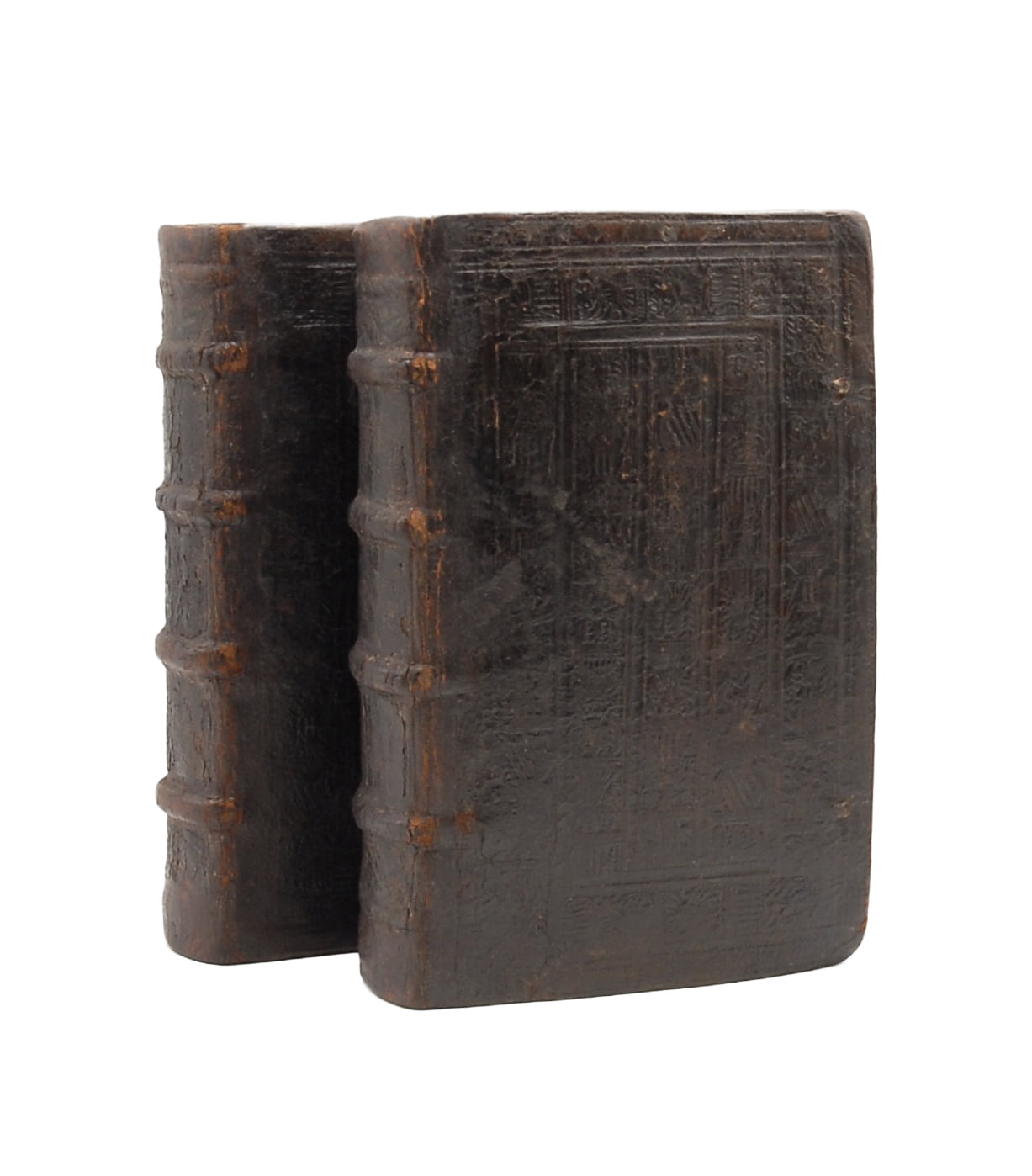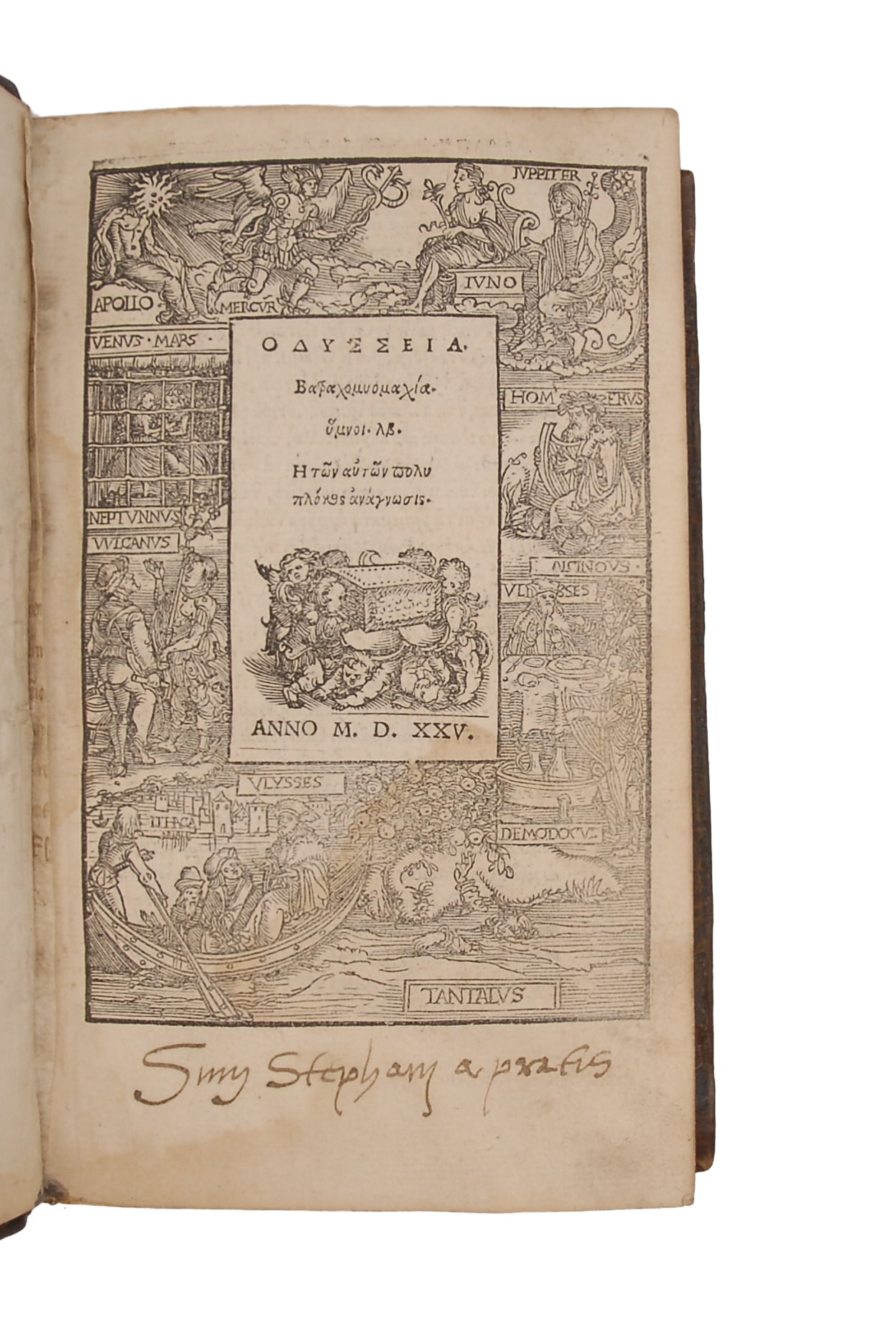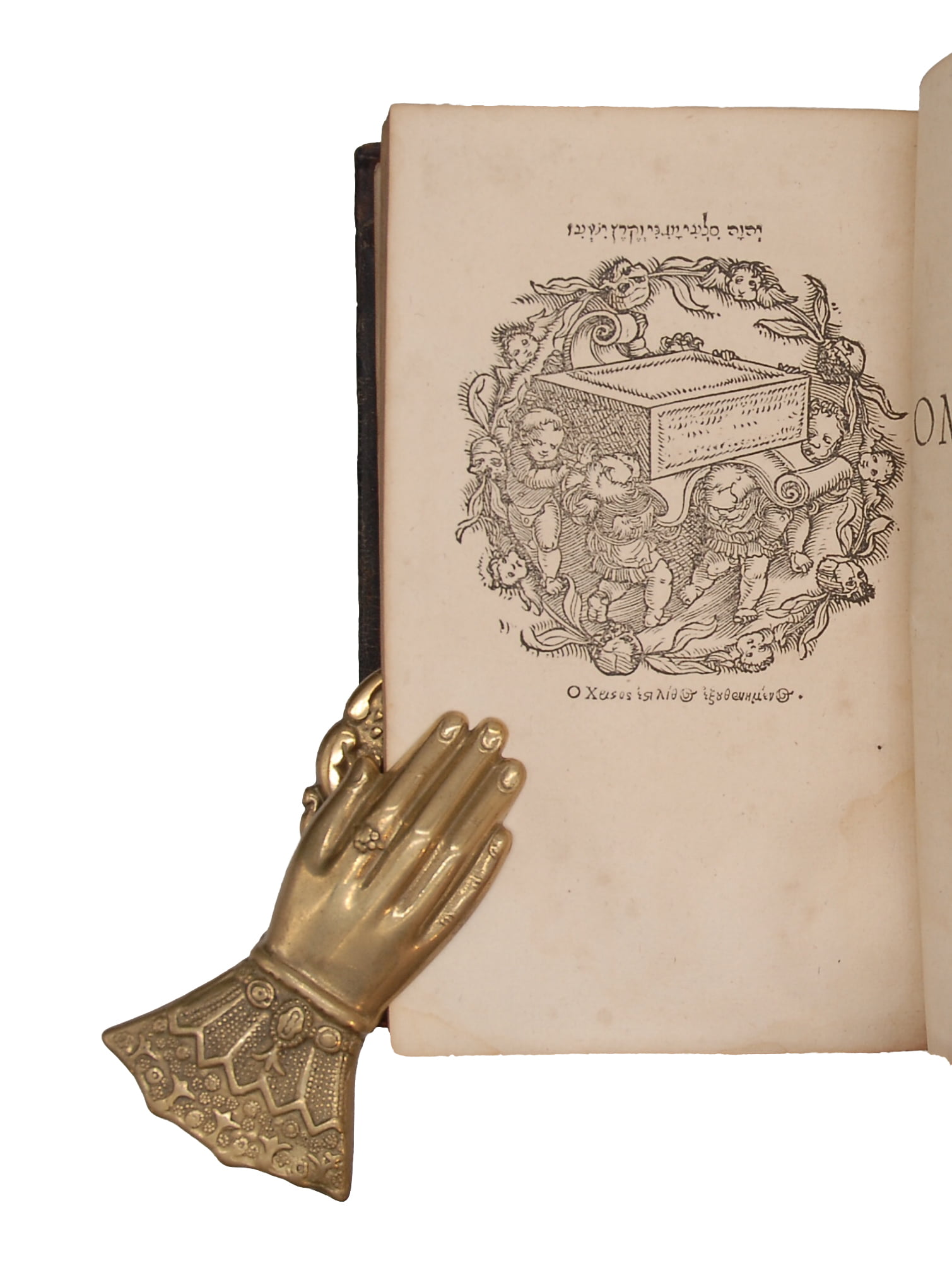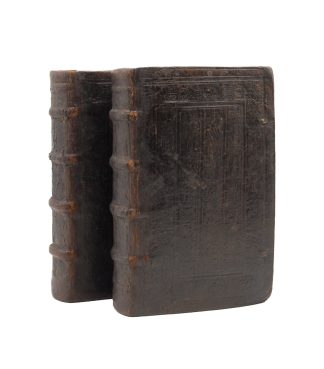HOMER
ΟΜΝΡΟΥ ΙΛΙΑΣ [...] ΟΔΥΣΣΕΙΑ
Strasbourg, Wolfgang Köpfel, 1525£8,500.00
Two vols. 8vo, ff. 277 (iii). 258 (v); (lvi). Greek letter, some Roman, some Italic. Title-pages exhibit exquisite full-page woodcuts depicting scenes from the Iliad and Odyssey. Slightly browned, generous margins. Iliad title page closely trimmed at fore edge; Odyssey water stain to gutter and lower margin of some quires. Robust decorative contemporary dark calf over pasteboards tooled in blind, outer borders of acanthus and pot decoration surround three rolls within rectangular panel (for variants Oldham XXXV no. 519), probably Strasbourgeois. Spines with four bands, good preservation. Repairs to corners, spine heads and joints of both, slight rubbing of spines. Ownership inscription on title page of Iliad: Jo. Fred de Valimbert and on final page and Carolus Valimbertus Rhetore Bisuntinae (Orator of Bisuntinae) showing continued ownership by the aristocratic French family from Bescançon in the 16th century. Ownership inscription on title page of Odyssey: Sum Stephanj a Pratis – signatory of Étienne Desprez, president of the Bescançon school and correspondent of Erasmus of Rotterdam between 1529 and 1534.
First complete edition of these iconic texts printed outside Italy, following Demetrios Chalkokondylas’ editio princeps in 1488. The two epic poems rapidly usurped Virgil from his throne of esteem during the Renaissance, and the enduring importance of Homer is epitomised through the continual teaching and regard for the poet from antiquity to the modern day. Wolfgang Köpfel’s Strasbourg-based operation utilised Greek print intended to emulate ancient handwriting, demonstrating a pioneering example of the humanistic shift in attention from Latin to Ancient Greek texts in the German Renaissance. This particular 1525 edition is rare, especially in a contemporary binding and the two volumes together. Indeed, Didbin states that all the works of Cephalus (Köpfel) are a rare occurrence, especially these two volumes. (Dibdin, 46).
The woodcuts on the title pages have been found attributed to the hand of Hans Weiditz the younger, the German Renaissance artist also known as the Petrarch Master. Weiditz was one member of an elite circle of artists which included Hans Holbein and Albrecht Dürer. The woodcuts are from his time working with publishers in Strasbourg, where he lived from 1522 to 1536. They depict key tales and characters from the epic poems as well as the Muses and an artist’s impression of the blind poet himself. The Iliad woodcut climaxes in the pivotal battle between Achilles and Hector at the moment of Hector’s brutal demise. The Odyssey woodcut depicts key deities as well as a detailed portrayal of the eternal torture of Tantalus in the underworld.
The de Valimbert family were French aristocrats based in Besançon, in the region of Bourgogne-Franche-Comté. As well as the two members of the family that autographed the volumes, Jo. Fred de Valimbert and Carolus de Valimbert, Jacques de Valimbert was a notable member. He set out on a voyage to the Holy Land in March 1584, a manuscript documents his pilgrimage, written by his own hand, and in the first person. He journeys to Jerusalem across France, Italy, Greece, Turkey and finally transgresses such exotic lands as Syria. Only a man of significant means and with significant zeal could plan and accomplish such a feat, two hundred years before the Grand Tour Era, and this attests to the wealth and influence of his family.
An earlier owner of these historic volumes is Étienne Desprez, president of the Besançon school and correspondent of Erasmus of Rotterdam between 1529 and 1534 as well as an officer of the Archbishop of Besançon. Some letters survive of this correspondence, where Desprez expresses his intense loyalty and love for Erasmus. His writing constantly alludes to classical literature including the Epistles of Horace and Ovid’s Metamorphoses, demonstrating his taste for the ancients. One of his key duties was supplying Erasmus with a plentiful supply of wine. He met his end in Besançon’s own courts of justice: he was sentenced to death by hanging having murdered a certain Jean Varin. The dispute was, according to an account from the Chiflet Collection, over the tithes of harvest. If we are to believe the story, he is said to have miraculously resurrected after being hanged.
BMSTC Ger 412; Adams H-746; VD16 H-4652/4692; Didbin 46.In stock






